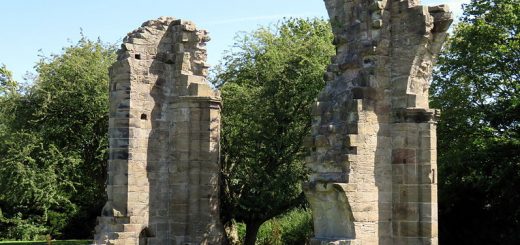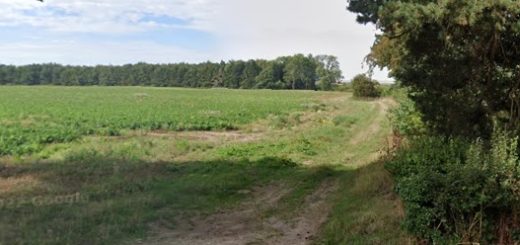St Giles’ Church In Wales, Wrexham
One of the Seven Wonders of Wales, St Giles’ Church dates from the 16th century and has an interesting piece of folklore attached to it. Alfred. Neobard Palmer in his History of the Parish Church of Wrexham(1886) tells us that , “There is a curious local tradition, which, as I understand it, points distinctly to a re-erection of one of the earlier churches on a site different from that on which the church preceding it had stood.”
![David Powell [GFDL (http://www.gnu.org/copyleft/fdl.html) or CC-BY-SA-3.0 (http://creativecommons.org/licenses/by-sa/3.0/)], via Wikimedia Commons](http://www.mysteriousbritain.co.uk/wp/wp-content/uploads/2018/12/1024px-Stgileswrexham-300x229.jpg) “According to the tradition just mentioned, which was collected and first published by the late Mr. Hugh Davies, the attempt to build the church on another spot (at Bryn-y-ffynnon as ’t is said), was constantly frustrated, that which was set up during the day being plucked down in the night. At last, one night when the work wrought on the day before was being watched, the wardens saw it thrown suddenly down, and heard a voice proceeding from a Spirit hovering above them which cried ever ‘Bryn-y-grog!’ ‘Bryn-y-grog!’ Now the site of the present church was at that time called ‘Bryn-y-grog’ (Hill of the Cross), and it was at once concluded that this was the spot on which the church should be built. The occupier of this spot, however, was exceedingly unwilling to part with the inheritance of his forefathers, and could only be induced to do so when the story which has just been related was told to him, and other land given him instead. The church was then founded at ‘Bryn-y-grog,’ where the progress of the work suffered no interruption, and where the Church of Wrexham still stands.”
“According to the tradition just mentioned, which was collected and first published by the late Mr. Hugh Davies, the attempt to build the church on another spot (at Bryn-y-ffynnon as ’t is said), was constantly frustrated, that which was set up during the day being plucked down in the night. At last, one night when the work wrought on the day before was being watched, the wardens saw it thrown suddenly down, and heard a voice proceeding from a Spirit hovering above them which cried ever ‘Bryn-y-grog!’ ‘Bryn-y-grog!’ Now the site of the present church was at that time called ‘Bryn-y-grog’ (Hill of the Cross), and it was at once concluded that this was the spot on which the church should be built. The occupier of this spot, however, was exceedingly unwilling to part with the inheritance of his forefathers, and could only be induced to do so when the story which has just been related was told to him, and other land given him instead. The church was then founded at ‘Bryn-y-grog,’ where the progress of the work suffered no interruption, and where the Church of Wrexham still stands.”
The legend refers to attempts to build a church at Bryn-y-ffynnon (Brynyffynon). It is thought that there was an early church there which was founded by St Silin. A later church (pre 13th century) was then built on the current site of St Giles’ and this was at first dedicated to St Aegidius and then eventually dedicated to St Giles. The steeple of this early church was blown down in 1330 and the rest of the building was subsequently demolished. The replacement church was damaged in the 1463 Wrexham fire was again reconstructed with the tower being erected in the early 16th century.
St Aegidius ( Ægidius) is the Latin equivalent of St Silin and in ‘The Lives of the British Saints’ by Baring-Gould and Fisher it is claimed that St Silin is the Welsh name for St Giles. So perhaps the tradition is in a fashion explaining the focus of worship moving from Brynyffynon to the current location.
Note: The American merchant, philanthropist and East India Company governor of Madras, Elihu Yale (Born 5 April 1649 – Died 8 July 1721) is buried here at St Giles’ Church. Yale University in America is named after him.
There is a bust of Lady Margaret Beaufort, Countess of Richmond and Derby (Born 31 May 1443 – Died 29 June 1509), mother of King Henry VII (Born 28 January 1457 – Died 21 April 1509), behind the lectern.




Recent Comments